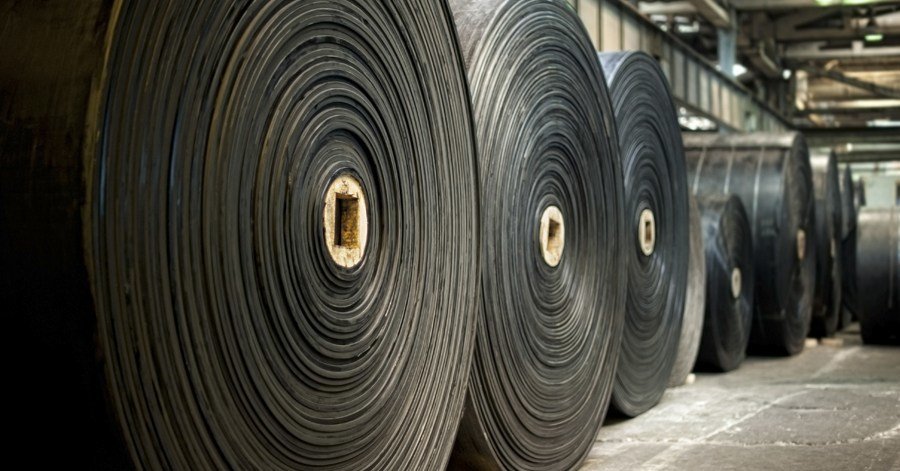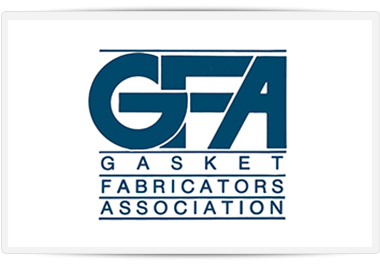While most people tend to think of natural rubber, there are several different types of rubber material, including synthetic rubber, styrene-butadiene rubber, silicone rubber, nitrile rubber, and more. Each type of rubber offers unique characteristics that can be utilized to enhance your product or application.
The actual characteristics and properties the synthetic rubber material adopts will greatly depend on the chemicals used in production. These synthetic rubber characteristics come directly from the chemicals used.
As a result, different synthetic rubber and natural rubber types can range from being as hard as softball or soft as a pillow. Because of this, it’s vital you choose the best types of natural rubber or synthetic rubbers to bolster the performance of your product or application.
Since no one expects you to understand all of the characteristics and nuances between synthetic rubber and natural rubber, the custom manufacturing team at Frank Lowe is here to help. Since 1955, we’ve helped manufacturers and business owners explore, pursue and create better products and solutions with our range of natural rubber and synthetic rubbers.
Let’s take a quick look at some of the most common types of synthetic rubbers and rubber materials we die cut and fabricate at Frank Lowe.
Natural Rubbers
Natural rubber is also known as gum rubber or India. This material is derived from the milky substance found in the Hevea Brasiliensis tree (rubber trees). Natural rubber offers a vast range of key characteristics, such as excellent abrasion resistance, high and low-temperature resistance, great tensile strength, and resilience.
Because of the extreme temperature resistance of natural rubber (high and low-temperature properties), it's often used in insulation, gloves, and tires for the automotive industry. Compared to other rubbers, natural rubber is one of the most flexible types, which makes it suitable for rubber bands.
It boasts good chemical properties and chemical resistance to some chemicals. However, natural rubber does have poor fuel resistance and may be vulnerable to certain mineral oils and non-polar organic solvents.
Neoprene Rubber Elastomer
Neoprene or Chloroprene Rubber was one of the first oil-resistant synthetic rubbers. This type of rubber is moderately resistant to synthetic lubricants, ozone, oxygen, UV, and petroleum.
It’s classified as a general-purpose elastomer that has good resistance to abrasions, excellent resilience, good tensile strength, and a low compression set. These characteristics make neoprene rubber a preferable solution for o rings.
This elastic material also offers tear-resistance and flex-cracking-resistant qualities. These qualities make neoprene ideal for sealing applications where other types of rubber wouldn’t suffice. In addition, neoprene rubber can be compounded to have flame resistance physical properties and good tensile strength
Silicone Types of Rubber Elastomer
Silicone rubber is a popular synthetic rubber that boasts a range of admirable attributes and physical properties. Silicone rubber materials retain good elastomeric properties at both high and low temperatures. It’s a highly customizable product that can be formulated to meet a range of different specifications.
Silicone boasts excellent abrasion resistance, heat aging properties, ozone resistance, and weathering resistance. However, this material has moderate physical properties to poor resistance to silicone fluids and solvents. It's also not as fuel resistant as comparable rubbers. Common products that use silicone rubber include:
In addition, silicone rubber can be compounded to have flame resistance physical properties and excellent resistance to extreme temperatures, including high and low temperatures.
Ethylene Propylene Diene Monomer Types of Rubber
Ethylene Propylene Diene Monomer (EPDM) rubber possesses several characteristics of traditional rubber elastomers, such as high tensile strength, tear resistance, and a low compression set.
What sets EPDM rubber apart from other types of rubber is its ability to resist degradation from weathering agents such as ozone and UV rays. At the same time, EPDM rubber boasts resistance to steam and polar substances.
All of its desirable attributes make EPDM rubber ideal for outdoor use as the perfect weather-resistant rubber or for use in the o rings. And EPDM rubber can be compounded to have flame resistance physical properties.
Butyl Rubber Materials
Butyl rubber is a synthetic elastomer created by combining isoprene and isobutylene. In fact, butyl rubber was the first rubber to be synthesized. It offers low moisture and low gas permeability.
Because of its good shock absorption characteristics and low gas permeability, it can be found across an array of applications. In fact, butyl rubber is the only elastomer known to offer excellent gas permeability — so much so it's impervious to gas.
These gas permeability characteristics make butyl rubber important in the manufacturing of sports-ball bladders, inner tubes, glove-box gloves, tubeless tires, and more. However, when it's compared to natural rubber, butyl rubber is often more expensive due to the more complex processing requirements. In terms of poor physical properties, butyl has poor flame resistance.
Nitrile Rubber or Buna-N Types of Rubber Material
Nitrile rubber — also known as Buna-N — is a highly versatile rubber material. You can find nitrile rubber in countless products and applications. Because it offers excellent resistance to petroleum-based oils and synthetic oils, nitrile rubbers are often used in everything from small engine carburetors to marine systems.
In fact, it's one of the top oil-resistant synthetic rubbers, which makes it widely used in oil and gas industries for different components on oil drilling equipment, such as for o rings. It’s also one of the most widely used elastomers in the manufacturing of industrial gaskets and seals. In addition to amazing resistance to most chemicals, nitrile rubber also offers excellent abrasion resistance as well as:
Nitrile rubber also offers resistance to non-aromatic to aromatic petroleum oils to aliphatic and aromatic hydrocarbon jet fuels. Nitrile rubber can be compounded to have flame resistance physical properties. Due to the alignment of the rubber molecules, nitrile does have poor electrical properties.
Red Rubber / Styrene-butadiene rubber (SBR) Types of Rubber Elastomers
As a copolymer of butadiene and styrene, red rubber or styrene-butadiene rubber (SBR rubber) elastomers have characteristics similar to natural rubber, which means it’s often substituted as a low price alternative.
It’s a great elastomer to use against hot water, cold water, low pressure steam, air, or gas. Red rubber is known to:
However, red rubber isn’t best suited for use with solvents, synthetic or petroleum-based oils, fuels, or hydraulic fluids.
Viton Types of Rubber Elastomer
Viton is created from a high-performance fluoroelastomer that delivers exceptional heat resistance — typically up to 500° F. In addition to providing heat resistance, Viton is also resistant to:
Importantly, Viton rubber gaskets and o rings offer resistance to compression sets over extended periods of time at extreme temperatures (high). It also has good electrical properties for low-frequency, low-voltage applications, which makes the material suitable for static seals.
Diaphragm Rubber
Diaphragm rubber is a fabric reinforced, oil-resistant neoprene material ideally used to transmit motion between fluids. Diaphragm rubber is excellent for weather stripping material and can provide a long service life.
Thermoplastic Rubber (TPR)
Thermoplastic rubber or TPR is a physical mix of materials, such as rubber and plastic. Simply put, TPRs offer the feel, look, and elasticity of rubber with the processability of plastic. TPR materials are unique in they exhibit the physical characteristics of both plastics and rubbers as well as elastomeric and thermoplastic properties. Thermoplastic rubbers offer:
Thermoplastic rubbers are commonly used in:
Cloth Inserted Neoprene Types of Rubber
Cloth inserted neoprene is a type of rubber compound made with one or more polyester fabrics. This type of rubber can be especially helpful whenever dimensional stability is required. Cloth inserted neoprene can be used when moderate resistance to oil is necessary and in situations where cold and hot gasses and water are being conveyed.
Unlike non-cloth types of rubber, the cloth will stay intact whenever compression or bolt loads are high. Cloth inserted neoprene works to reduce gasket creep and adds an enhanced level of stability.
Contact Frank Lowe to Explore, Pursue, and Create with Different Types of Rubber
In addition to the previously mentioned different types of rubber, we also create rubber die cuts for components and applications with FDA-approved white rubber and many others. Fortunately, we don’t expect you to be an expert in the different types of rubber.
Instead, we’ll use our decades of experience to guide you to the best solution based on the unique needs of your application. Simply put, we’ll get to know your application and help you explore, pursue, and create better with different types of rubber.






